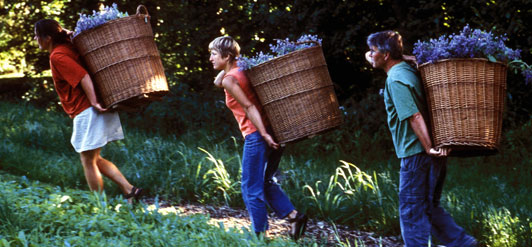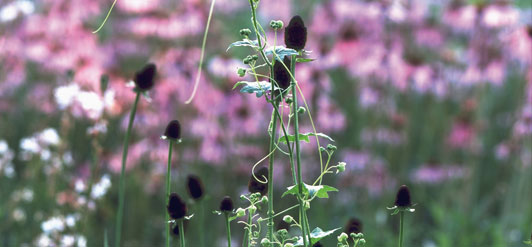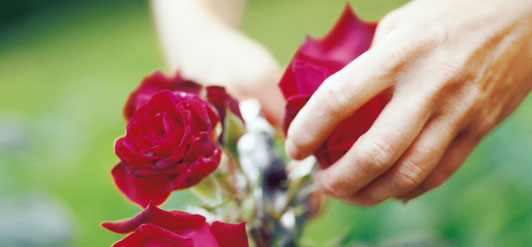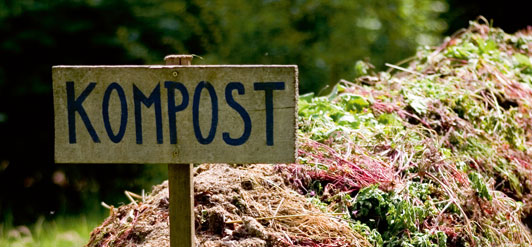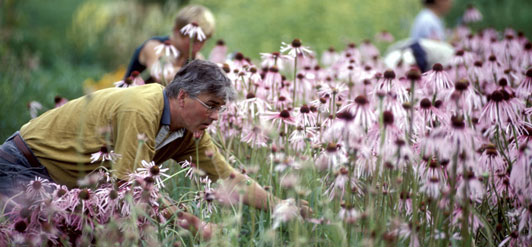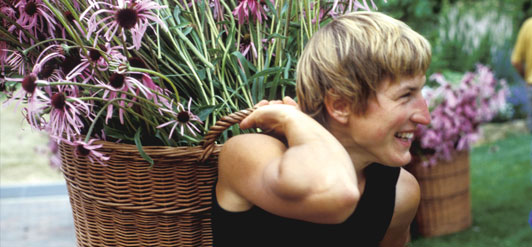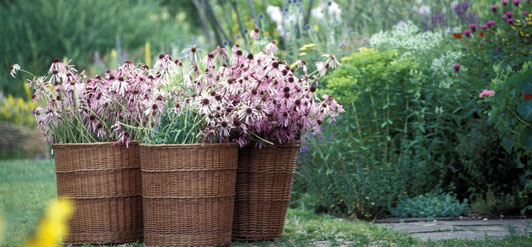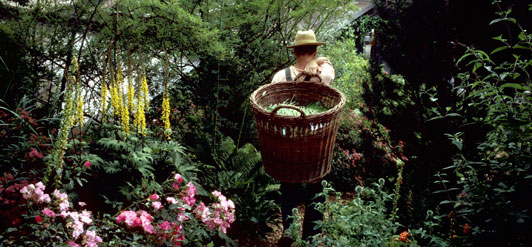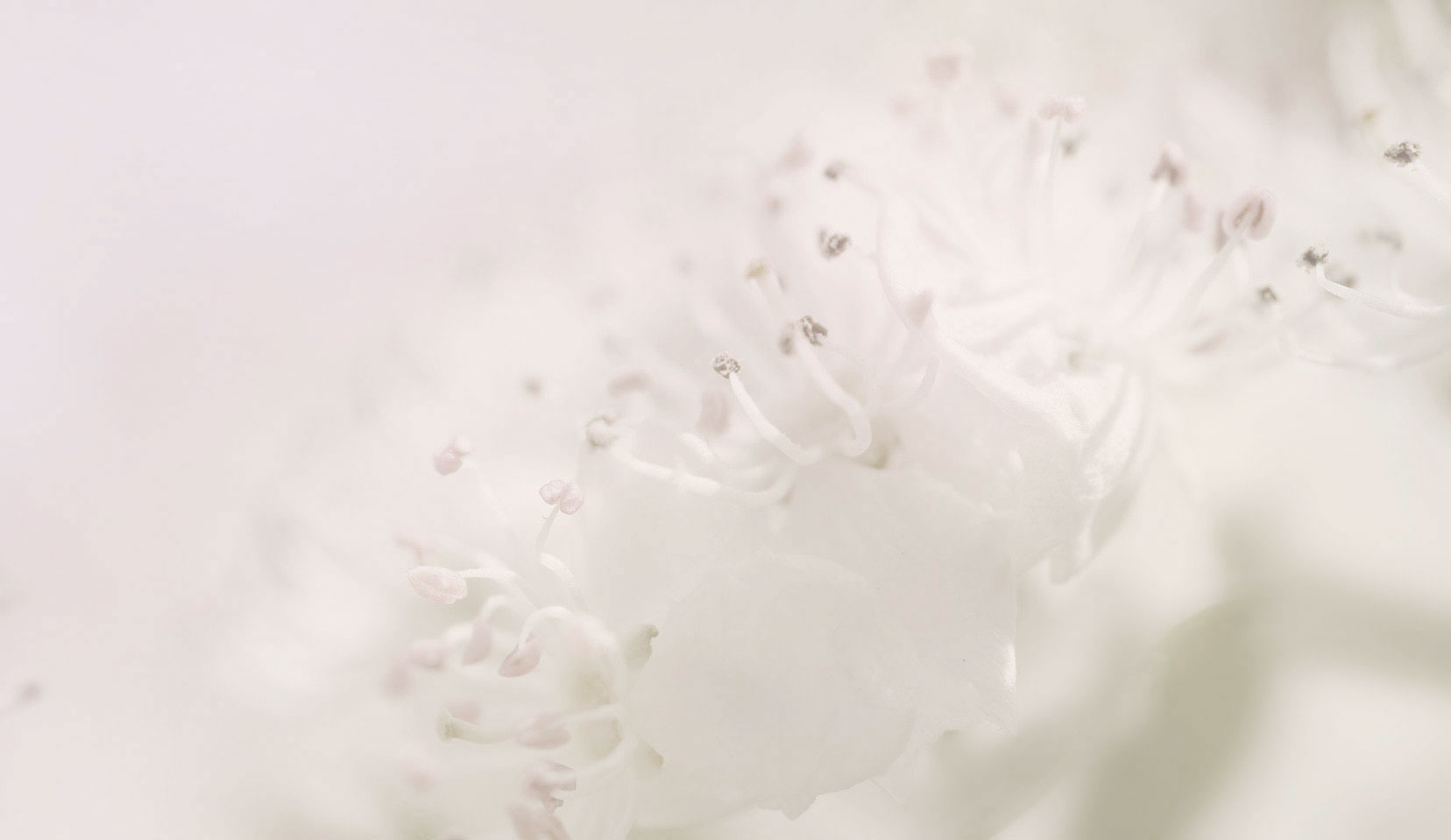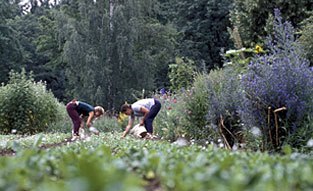
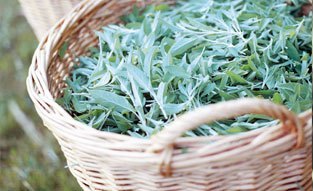
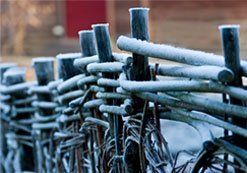
The WALA Medicinal Herb garden
A medicinal herb garden on the heavy clay soils of the Swabian Mountains? The farmers of Eckwälden looked very sceptical when WALA started searching for a plot of land for their new project in the 1950s. Rudolf Hauschka purchased a boggy meadow at the foot of the mountain directly behind the construction site for the new company building, which WALA gardeners have been cultivating ever since using biodynamic methods. After many years the soil became crumbly and easy to work. Today the gardeners grow more than 150 different medicinal plants for the manufacture of WALA preparations on an area of more than 4.5 hectares. Dragonflies, toads and fire salamanders have made their homes amid the water lily pond, stream, beehives, meadows and woods.
What is biodynamic agriculture?
This method, developed by Dr. Rudolf Steiner in 1924, regards the garden as a more or less closed system. Most of the seeds, compost and potting compost are self-produced. The gardeners use various plant preparations which help the compost to decompose better and strengthen the resistance of the plants to pests and disease.
Working by hand is essential when dealing with plants. When sowing and harvesting the WALA gardeners work with the rhythms of Nature. Strong healthy plants are the result. The right basis for Dr. Hauschka Skin Care products.
Planting
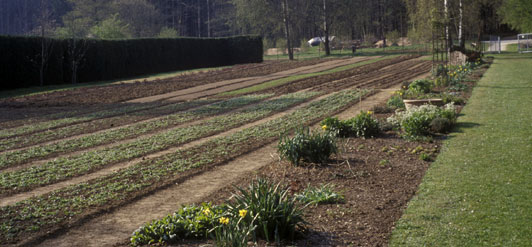
Potting soils
At the beginning of February we start with the first greenhouse plantings. The selection of suitable potting soils is an important prerequisite for successful plant rearing. As the most important organ, they are responsible for the growth and health of the plants. For our potting soils we therefore use selected and best composts from our own production. These have usually been turned twice a year by hand. They are also treated with the biodynamic compost preparations prepared in the WALA garden from the medicinal plants valerian, stinging nettle, oak, chamomile, dandelion and yarrow. The addition of these preparations lastingly enhances the vital forces and processes in soil and plant. In addition they increase the vitality of the plants and the soil and their resistance against disease and pests.
Seed baths
The seed baths also have a positive influence on the vitality and growth of the plants. They are prepared with some of the biodynamic compost preparations already mentioned above with the addition of other herbs. Valerian, for example, stimulates the germination phase and the warmth processes of the plants. The oak bark preparation and chamomile prevent fungal infections while the horn manure preparation stimulates the growth of the roots. The seeds are placed in the hand-warm seed bath for 10-15 minutes in cloth bags. When they have been dried, they are ready for sowing. The only exception are the fine seeds of the light-dependent germinators such as marjoram, tobacco or wormwood. These are planted directly into the seed boxes, pressed down gently and then sprayed finely with the seed bath fluid.
Care of seedlings
When the seedlings have fully developed their plumule leaves they are transplanted singly or in groups from the seed box into plant boxes or frames. Here they have the necessary leaf and root space to develop into strong, healthy young plants. After a further phase of development they are potted and, when the roots are well developed, later planted out.
Seed quality
The quality of the seeds is an important factor. We harvest most of our seeds from the WALA garden. This is done from early summer to autumn. It is important to find the optimum harvesting time to ensure good germinating capacity of the seed the following year. After harvesting, the seeds are stored in a dry place to mature further. During the winter months they are cleaned and stored in a cool place in suitable, carefully labeled containers until they are used for the next planting.
Documentation
All planting information such as sowing dates, beginning of germination, source, varieties, transplanting and potting, seed harvesting etc., are carefully documented in the "Cultivation Files - Medicinal Plants".
Harvesting

Harvesting in the WALA Herb Garden
Harvesting of medicinal plants takes place throughout the year in the WALA Garden. Winter and spring are the seasons for harvesting roots, e.g. valerian (Valeriana officinalis), marshmallow (Althaea officinalis) and lovage (Levisticum officinale), but also barks such as birch (Betula pendula), oak (Quercus robur) and horse chestnut (Aesculus hippocastanum). However, the main harvesting season is in the summer months of June and July. During this time almost every day begins with a harvest. Towards the end of the season, in the autumn, the fruits are harvested for the WALA elixirs, including hawthorn in September and quince at the beginning of October.
Composting
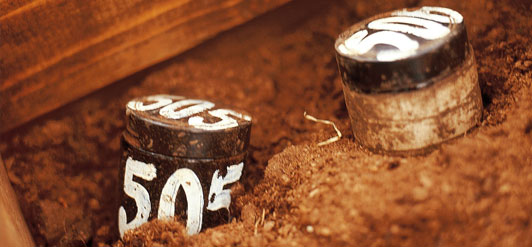
Composting in the WALA Herb Garden
The earth is the most important element for the growth and health of the medicinal plants. The regular addition of compost and other procedures such as the application of biodynamic preparations increase the fertility of the soil and enhance the vital processes in the earth.
Producing good compost involves a great deal of preparatory work. The WALA gardens have about 25 composts. Most of these are mixed composts, meaning they contain all the plant residues found in the garden, e.g. grass clippings, prunings etc. In addition, while preparing the compost heap, layers of cow manure from the nearby ‘Sonnenhof’ Demeter farm in Bad Boll are added. When the compost heap has reached a certain height it is covered with straw. In addition to these mixed composts, leaf and wood chipping composts are also prepared in late autumn.
In the following spring or autumn the compost is then turned for the first time.
During this process, all the layers are mixed and loosened, allowing us to look inside the compost heap. We can see how richly the compost is permeated with worms and other creatures, can observe its colour, feel its moisture and perceive its smell. The turning allows us to use our own bodies to experience the heaviness or lightness of the earth in the compost heap.
After turning, the compost preparations are added. These contain yarrow, dandelion and chamomile flowers, oak bark, green stinging nettle shoots and the juice of valerian flowers. Each of the preparations has a different task and a separate effect on the compost heap. The production of its own biodynamic preparations is one of the highlights of the year in the WALA garden.
Use of the compost
Once the breakdown processes in the compost are largely complete (after two to four years), the compost can be applied to the beds. Depending on the quality of the soil and the use of the beds, different amounts of compost are dug in with a spade or sometimes with a cultivator (four-pronged gardening tool) or a hoe. The tillage of the soil in autumn and the subsequent action (soil-modifying effect) of the frost in the winter have a very positive effect on the soil structure.
This regular addition of compost enhances the soil’s long-term fertility and promotes nature’s vital processes and forces. This gives the plants increased resistance against pests and disease.
Drying
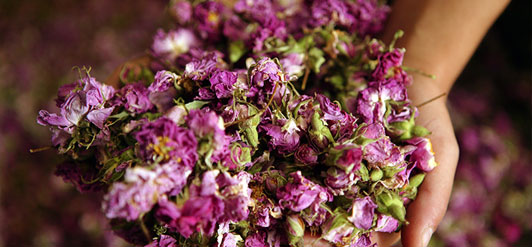
Drying medicinal plants in the WALA Herb Garden
Dried plants or plant parts are required for production of the Dr. Hauschka body oils and the medicinal oils.
The plants are dried in the drug house by the so-called condensation process. In this process the warm, moisture-laden drying air is cooled to below dew point. This leads to condensation of the moisture which can then be removed in liquid form. Some of the energy generated during this process can be returned to the air current. The average room temperature during the process is 25-35°C. The condensation process allows us to dry the plants as quickly as possible. This is very important for a high product quality.



